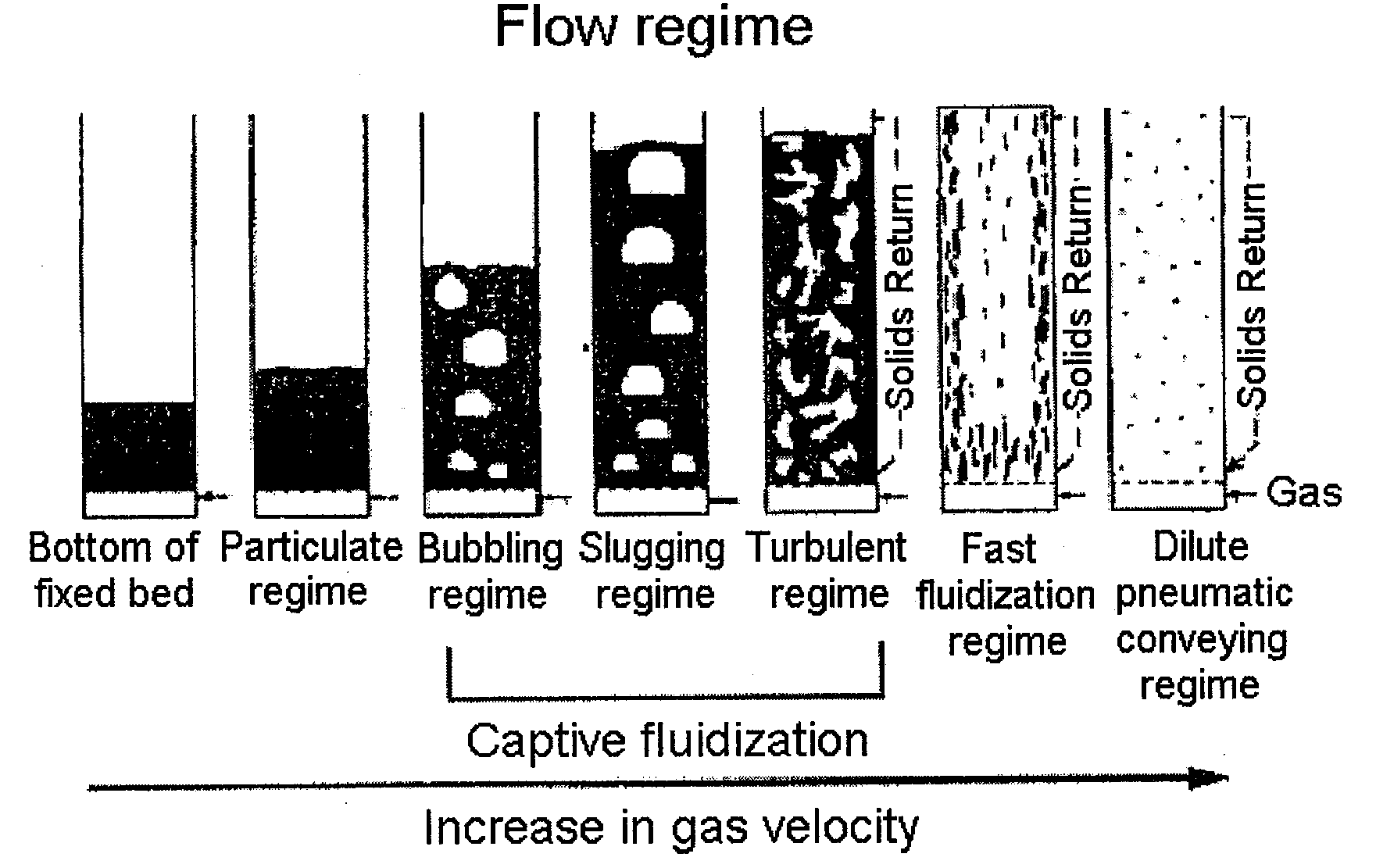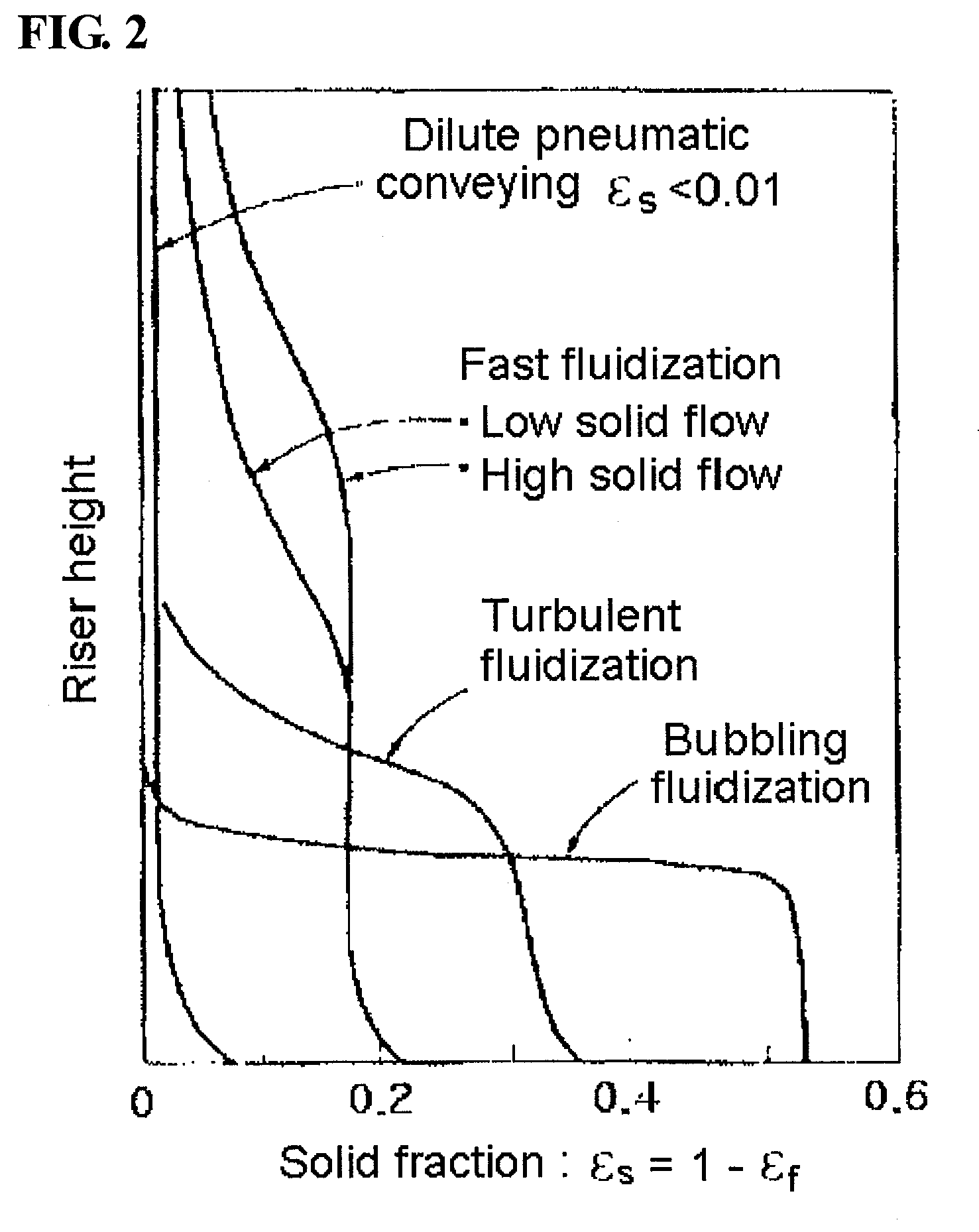Catalytic Cracking Process Using Fast Fluidization for the Production of Light Olefins from Hydrocarbon Feedstock
a hydrocarbon feedstock and hydrocarbon cracking technology, which is applied in the direction of catalytic naphtha reforming, organic chemistry, hydrocarbon oil treatment products, etc., can solve the problems of limited production of light olefin compounds, high heat energy requirements, and difficult control of the composition of olefins, etc., and achieve high selectivity and high conversion rates
- Summary
- Abstract
- Description
- Claims
- Application Information
AI Technical Summary
Benefits of technology
Problems solved by technology
Method used
Image
Examples
example 1
Fast Fluidization Regime
A. Fabrication of Cold Model
[0092]A cold model was fabricated in the same manner as in Comparative Example 1, as shown in FIG. 4.
B. Catalyst
[0093]The same catalyst as that used in Comparative Example 1 was used.
C. Test for Flow Regime
[0094]The test was conducted in the same manner as in Comparative Example 1. The velocity of the fluidization gas was 0.83 m / s, and the velocity of the catalyst to be circulated into the inlet of the lower portion of the riser was 7.7 kg / hr, corresponding to 33.6 kg / m2s in the riser. Under the above conditions, the pressure drop value was measured along the riser height, and thus the solid fraction was obtained (FIG. 6). In FIG. 6, the solid fractions were 0.092 and 0.049 at the ¼ point and ¾ point from the lower portion of the riser, respectively, the difference therebetween being 0.043. According to the definition of the present invention, the flow regime could be confirmed to be a fast fluidization regime.
example 2
A. Preparation of Catalyst
[0106]A catalyst was prepared in the same manner as in Comparative Example 2.
B. Treatment of Catalyst with Steam
[0107]The catalyst was treated with steam in the same manner as in Comparative Example 2.
C. Production of Light Olefin
[0108]In Example 2, a fluidized bed reaction system the same as in Comparative Example 2 was used, with the exception of the riser. As such, the riser had a height of 2.4 m and a diameter of 0.94 cm.
[0109]A feedstock having a composition the same as in Comparative Example 2 was used, and the feedstock had conditions of 150 g / hr and 400° C., the steam had conditions of 45 g / hr and 400° C., and the catalyst had conditions of 8400 g / hr and 725° C. In consideration of the sectional area of the riser, the catalyst was supplied in an amount of 33.6 kg / m2s (the same as that of the cold model of Example 1). Further, in order to efficiently circulate the solid catalyst in the interest of the properties of the test system, 60 L / hr of nitroge...
PUM
| Property | Measurement | Unit |
|---|---|---|
| boiling point | aaaaa | aaaaa |
| size | aaaaa | aaaaa |
| size | aaaaa | aaaaa |
Abstract
Description
Claims
Application Information
 Login to View More
Login to View More - R&D
- Intellectual Property
- Life Sciences
- Materials
- Tech Scout
- Unparalleled Data Quality
- Higher Quality Content
- 60% Fewer Hallucinations
Browse by: Latest US Patents, China's latest patents, Technical Efficacy Thesaurus, Application Domain, Technology Topic, Popular Technical Reports.
© 2025 PatSnap. All rights reserved.Legal|Privacy policy|Modern Slavery Act Transparency Statement|Sitemap|About US| Contact US: help@patsnap.com



